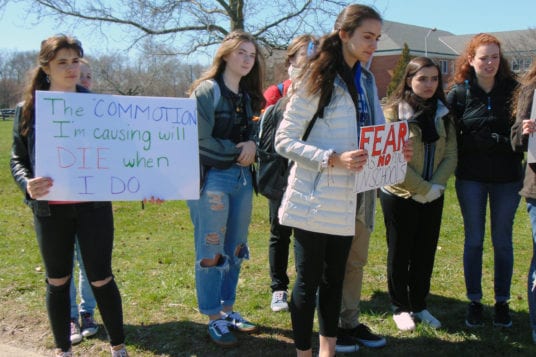Students in the Middle Country Central School District’s Universal Pre-K program are receiving the gift of literacy from the Long Island-based Carol Pufahl Literacy Foundation.
Thanks to state funding secured by the office of State Sen. John Flanagan (R), the foundation is providing free, age-appropriate books each month to the children, in keeping with the foundation’s mission to increase early childhood literacy. The grant will help offset the cost of the program.
The literacy foundation delivers what’s known as the Dolly Parton Imagination Library to each child enrolled in the UPK program as part of a system that includes access to books and family literacy. Founded by the country singer in 1996, the Dolly Parton Imagination Library is a set of books beginning with the children’s
classic “The Little Engine That Could.” Each month, a new carefully selected book is mailed directly to the home of children enrolled in the program. Registration is free, with no cost or obligation to the family.
“Studies clearly demonstrate that early literacy is the key to academic and lifelong success.”
— Roberta Senzer
The Middle Country UPK is the largest program on Long Island, serving more than 400 youngsters from Centereach, Selden, Lake Grove, Lake Ronkonkoma, Port Jefferson Station and Farmingville. Participating family members have been overwhelmingly positive about the program’s impact on their children since it was first introduced last month.
“My son gets so excited to open the mailbox to look for and get his monthly book,” said mother Jennifer Capinigro. “Thank you.”
Flanagan is a long-standing education advocate, having previously served as the chairman of the New York State Committee on Education.
“It is my pleasure to be able to assist the Carol Pufahl Literacy Foundation in its mission of providing children in our community with a strong educational base,” he said. “By delivering books directly to young children in the Middle Country school district, the foundation helps ensure that these children enter school already acquainted with reading. This will help them reach their full potential and allow them to succeed in the coming years.”
Research has shown that children raised in homes that promote family literacy grow up to be better readers and do better in school than children raised in homes where literacy is not promoted. This is also supported through the Carol Pufahl Literacy Foundation’s Family Literacy workshops, which teach families how a child can be an active participant, rather than a passive one while reading with parents.
“Studies clearly demonstrate that early literacy is the key to academic and lifelong success,” foundation CEO Roberta Senzer said. “The Imagination Library is one way our foundation is working to foster a child’s love of
reading and to put books in the hands of all Long Island children to ensure they have the advantage they need when starting kindergarten.”
To learn more about the foundation or to make a tax-deductible donation visit www.cpliteracyfoundation.org.
























